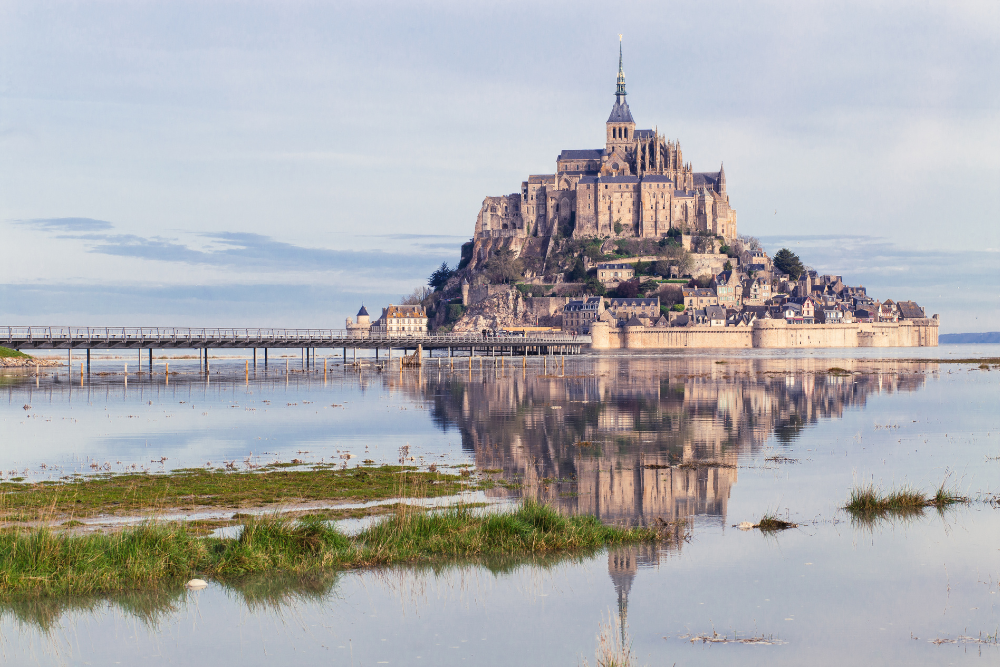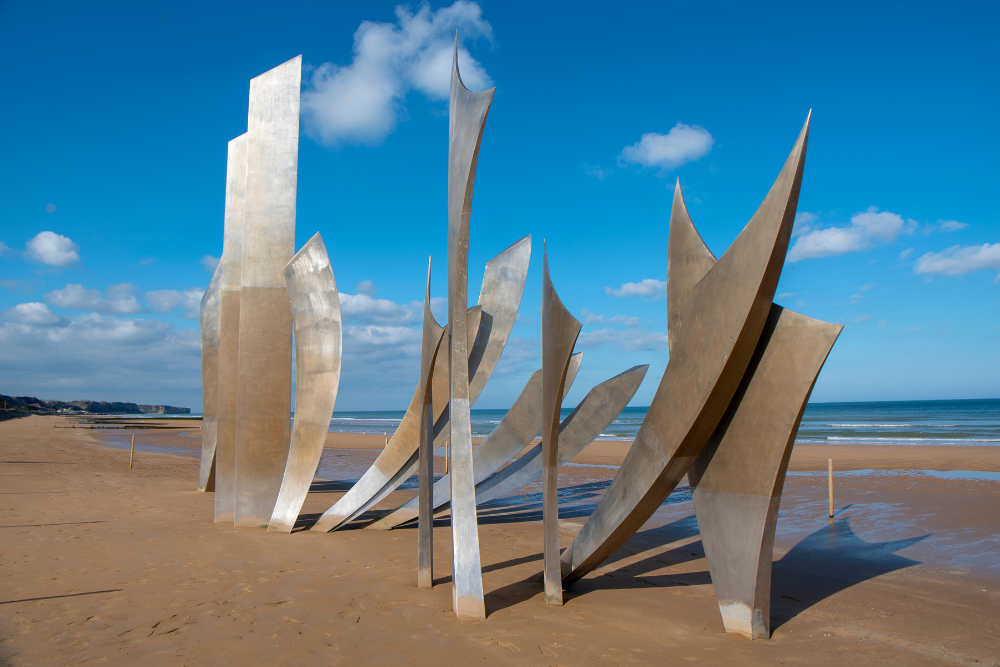Normandy, a region in northern France, is forever etched in history as the site of the D-Day landings, a pivotal moment during World War II. On June 6, 1944, Allied forces launched Operation Overlord, marking the beginning of the end for Nazi occupation in Western Europe. The D-Day landings, which took place on five beaches in Normandy, are among the most significant military operations in history, and today, the region is home to various memorials, museums, and cemeteries that honor the bravery of those who fought and died during the invasion.
A visit to Normandy’s D-Day beaches offers a powerful opportunity to walk through history, explore the sites of fierce battles, and reflect on the sacrifices made during this crucial moment in the war. In this guide, we’ll take a journey through the history of Normandy’s D-Day beaches and highlight the most important sites to visit to understand the events that unfolded here.
The D-Day Landings: A Turning Point in World War II
The D-Day landings, also known as Operation Neptune, were part of the larger Allied campaign to liberate Western Europe from Nazi control. On the morning of June 6, 1944, approximately 156,000 Allied troops—comprised of American, British, Canadian, and other Allied forces—stormed the beaches of Normandy in an operation that would go down in history as the largest amphibious invasion ever undertaken.
The goal was to establish a beachhead in northern France, from which the Allies could push inland and eventually liberate France and the rest of Western Europe from Nazi occupation. The landings were spread over five beaches, each assigned to a different Allied force: Utah and Omaha (American forces), Gold and Sword (British forces), and Juno (Canadian forces).
While the landings were successful, they came at a tremendous cost. Thousands of soldiers lost their lives on that fateful day, and the battles that followed in the weeks after D-Day were intense and brutal. Today, the beaches and surrounding areas are home to numerous memorials, cemeteries, and museums, preserving the legacy of those who gave their lives for freedom.
1. Omaha Beach: A Site of Courage and Sacrifice
Perhaps the most well-known of the D-Day beaches, Omaha Beach was the site of some of the heaviest fighting on June 6, 1944. The American 1st and 29th Infantry Divisions landed here, facing fierce resistance from German forces entrenched in bunkers and pillboxes along the cliffs.
The battle for Omaha Beach was marked by significant American casualties, with over 2,000 soldiers killed or wounded. The beach itself, with its long expanse of sand and gentle slope, may appear serene today, but it was once a brutal battlefield.
Key Sites to Visit at Omaha Beach:
- Normandy American Cemetery and Memorial: Situated above Omaha Beach, this cemetery is the final resting place of over 9,000 American soldiers who died during the Normandy campaign. The site offers stunning views of the beach and serves as a solemn reminder of the sacrifices made. The visitor center provides historical context and exhibits about the D-Day landings.
- Omaha Beach Memorial Museum: Located near the beach, this museum tells the story of the battle through exhibits, photographs, and artifacts. It offers a moving insight into the events of D-Day and the challenges faced by the American forces.
- Pointe du Hoc: This promontory, located between Omaha and Utah Beach, was the site of an audacious mission by the U.S. Army Rangers to scale the cliffs and destroy German artillery. The Rangers faced intense fire but succeeded in their mission, and today, visitors can explore the preserved battlefield, complete with craters and bunkers.
2. Utah Beach: The American Victory
Utah Beach was the westernmost of the five D-Day landing sites and saw the landings of the American 4th Infantry Division. Unlike Omaha Beach, the landings at Utah were relatively successful, with fewer casualties, though the area still saw fierce fighting as the Allies pushed inland.
Key Sites to Visit at Utah Beach:
- Utah Beach Museum: Located in the former German stronghold of the Ecomusée, this museum offers a detailed look at the landings on Utah Beach and the role of the American forces in the success of D-Day. It features exhibits on the landing crafts, vehicles, and weapons used during the invasion, along with accounts of the soldiers who fought there.
- Utah Beach Cemetery: A small but significant cemetery located near the beach, this site honors the fallen soldiers who gave their lives in the battle for Normandy. The peaceful setting offers a moment of reflection.
3. Juno Beach: The Canadian Contribution
Juno Beach was the landing site for the Canadian 3rd Infantry Division and the Royal Winnipeg Rifles. The Canadians faced stiff resistance but were successful in securing the beachhead, advancing farther inland than other Allied forces. The battle for Juno Beach was significant for the role Canada played in the liberation of France.
Key Sites to Visit at Juno Beach:
- Juno Beach Centre: Located in Courseulles-sur-Mer, this museum is dedicated to the Canadian forces who participated in the landings and their contributions to the Normandy campaign. It features exhibits on the soldiers’ experiences, along with personal accounts and artifacts.
- Juno Beach Memorial: This memorial, located near the beach, honors the soldiers who fought and died here. The site is particularly poignant, as it is dedicated to the Canadian soldiers who sacrificed their lives during the landings.
4. Sword Beach: The British Effort
Sword Beach was the easternmost landing site for the British 3rd Infantry Division, which, alongside French forces, had the task of securing the beach and advancing toward the city of Caen. While the landings at Sword Beach were relatively successful, the Allies encountered strong German resistance, especially from armored units stationed in the nearby town of Pegasus Bridge.
Key Sites to Visit at Sword Beach:
- Pegasus Bridge Museum: Located a short distance from Sword Beach, this museum tells the story of the British 6th Airborne Division’s mission to capture Pegasus Bridge, a crucial crossing over the Caen Canal. The operation was a success, and the bridge remains a symbol of British determination and courage.
- Sword Beach Memorial: This memorial, located at the eastern end of Sword Beach, honors the British soldiers who fought here during the D-Day landings.
5. Gold Beach: The British and Allied Forces
Gold Beach was the site where British forces, along with troops from the British Commonwealth, landed on D-Day. The British 50th (Northumbrian) Infantry Division faced stiff resistance from German forces entrenched along the coastline. Despite the challenges, the British successfully advanced inland, contributing significantly to the overall success of the invasion.
Key Sites to Visit at Gold Beach:
- Arromanches 360 Circular Cinema: Located in the town of Arromanches, this unique 360-degree cinema offers a stunning visual experience that recounts the history of the landings at Gold Beach. It provides an immersive way to understand the challenges faced by the Allied forces and the creation of the artificial harbors used during the invasion.
- The Mulberry Harbors: Arromanches was also the site of the famous Mulberry harbors, artificial harbors constructed by the Allies to facilitate the unloading of troops and supplies. While most of the harbors have since been dismantled, remnants can still be seen off the coast of Arromanches.
Conclusion: Honoring the Legacy of D-Day
A visit to the D-Day beaches of Normandy is an opportunity to reflect on one of the most momentous events of World War II. The bravery, sacrifice, and resilience displayed by the soldiers on June 6, 1944, helped change the course of history and bring about the eventual liberation of France and Europe from Nazi rule. Today, the beaches of Normandy stand as powerful reminders of the cost of freedom.
Whether you’re walking along the shores of Omaha Beach, visiting the museums that tell the story of the landings, or reflecting at one of the many cemeteries, the D-Day beaches offer a chance to connect with history and honor the heroes who fought for peace and liberty. Normandy’s D-Day sites are not only educational but deeply moving, and they continue to inspire visitors from around the world who come to pay their respects to the sacrifices made during World War II.












